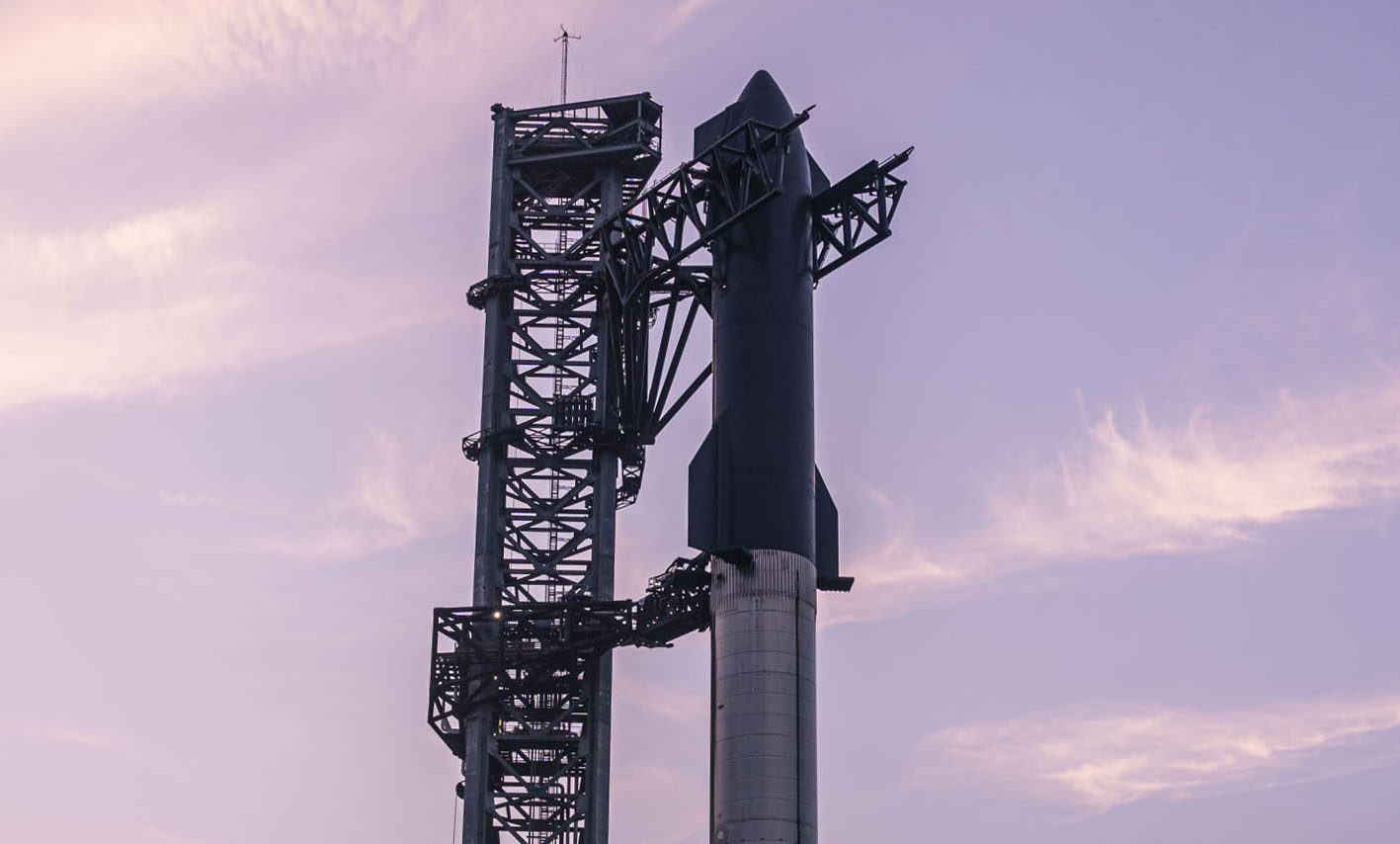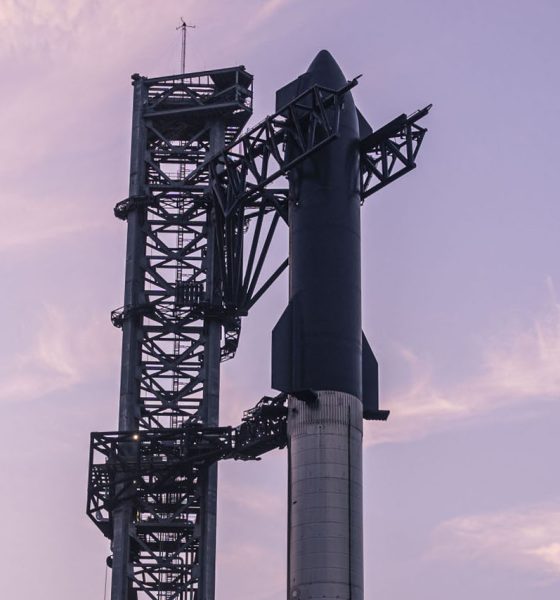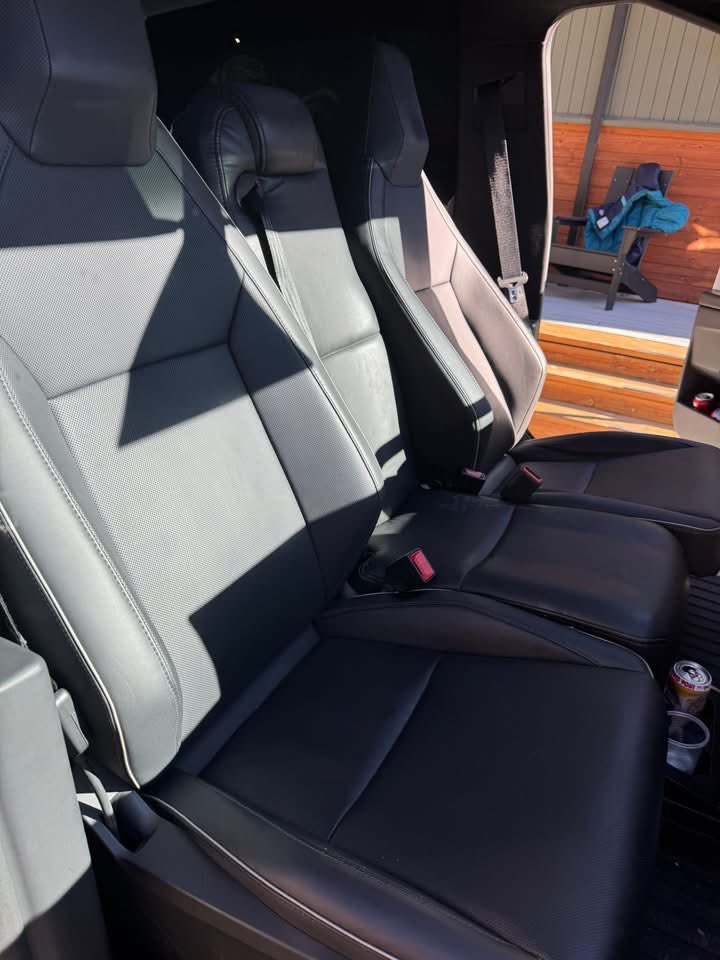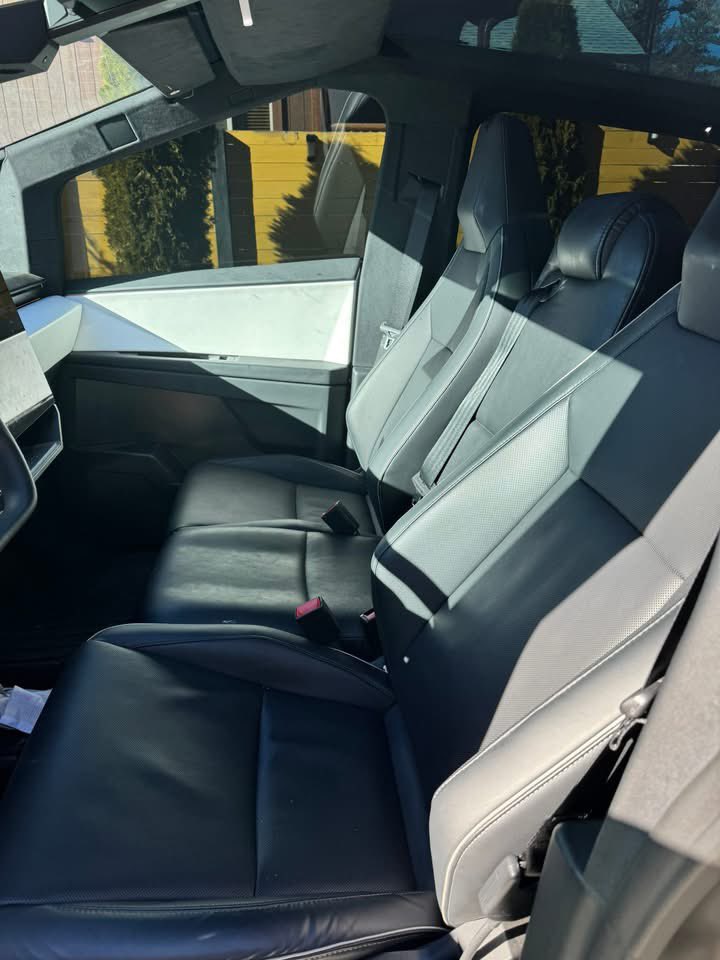For the second time this week, SpaceX is preparing for the maiden test flight of Starship, the company’s most ambitious rocket to date and the most powerful rocket ever built. If successful, Starship could become the vehicle of choice to take astronauts back to the moon or perhaps even take humanity on its first-ever journey to Mars.
Starship is poised for liftoff as early as Thursday during a one-hour launch window starting at 8:28 a.m. CT (9:28 a.m. ET). The rocket will be launching from Starbase, SpaceX’s private spaceport at the southernmost point of Texas. Similar to other missions, the Starship test flight will be livestreamed on SpaceX’s website about 45 minutes before the scheduled liftoff.
This will be Starship’s second attempt at a test flight. The rocket was initially set for its maiden flight on Monday, but the launch was halted due to a valve issue. The SpaceX team ended up treating the rest of the launch attempt as a “wet dress rehearsal,” with the private space company going through Starship’s launch steps except for the rocket’s actual liftoff.
The Test Flight
Starship is a very imposing rocket and is comprised of two sections. At its bottom lies the Super Heavy booster, a 230-foot-tall (69 meters) cylinder equipped with 33 engines, and sitting atop it is the 164-foot-tall (50 meters) Starship spacecraft.
Upon ignition, the booster is expected to propel the spacecraft over the Gulf of Mexico toward space. At around two and a half minutes after takeoff, the Super Heavy rocket booster is expected to separate from the Starship spacecraft and descend into the ocean. The Starship spacecraft will then utilize its engines for over six minutes to reach almost orbital speeds.
Starship is expected to complete nearly a full orbit of Earth before re-entering the atmosphere near Hawaii. Provided that everything goes according to plan, Starship would be splashing down in the Pacific Ocean about an hour and a half after it takes off from Texas, as noted in a CNN report.
Elon Musk Sets Expectations
While there is much humor to be inspired by Starship’s possible 4/20 maiden flight, SpaceX CEO Elon Musk has tempered expectations about the upcoming rocket launch. Musk has noted that “success is not what should be expected… That would be insane,” when it comes to the test flight. Musk would know, considering his vast experience with rocket-building that began way back during Falcon 1’s days from 2006 to 2008.
Starship development has taken place at SpaceX’s Texas spaceport. Early testing of Starship started with “hop tests” of several prototypes, which progressed from short flights a few dozen feet off the ground to high-altitude flights. And while many of the tests ended in massive explosions, one suborbital flight test in May 2021 proved successful. Footage from the test looked like something from a sci-fi movie.
Musk’s tempered expectations for Starship’s maiden test flight should come as no surprise. Back when SpaceX’s Falcon Heavy rocket made its first launch in 2018, Musk estimated only a 50-50 chance of success. At the time, Musk even joked that people came from all over the world to witness either an amazing rocket launch or the best fireworks display they had ever seen. Fortunately, the Falcon Heavy launch was successful, and it provided some of the most iconic images of modern spaceflight in the form of Starman and his red Tesla Roadster floating in space.
SpaceX’s livestream for Starship’s second test flight attempt can be viewed below.
Don’t hesitate to contact us with news tips. Just send a message to simon@teslarati.com to give us a heads up.

Cybertruck
Tesla Cybertruck undergoes interior mod that many owners wanted
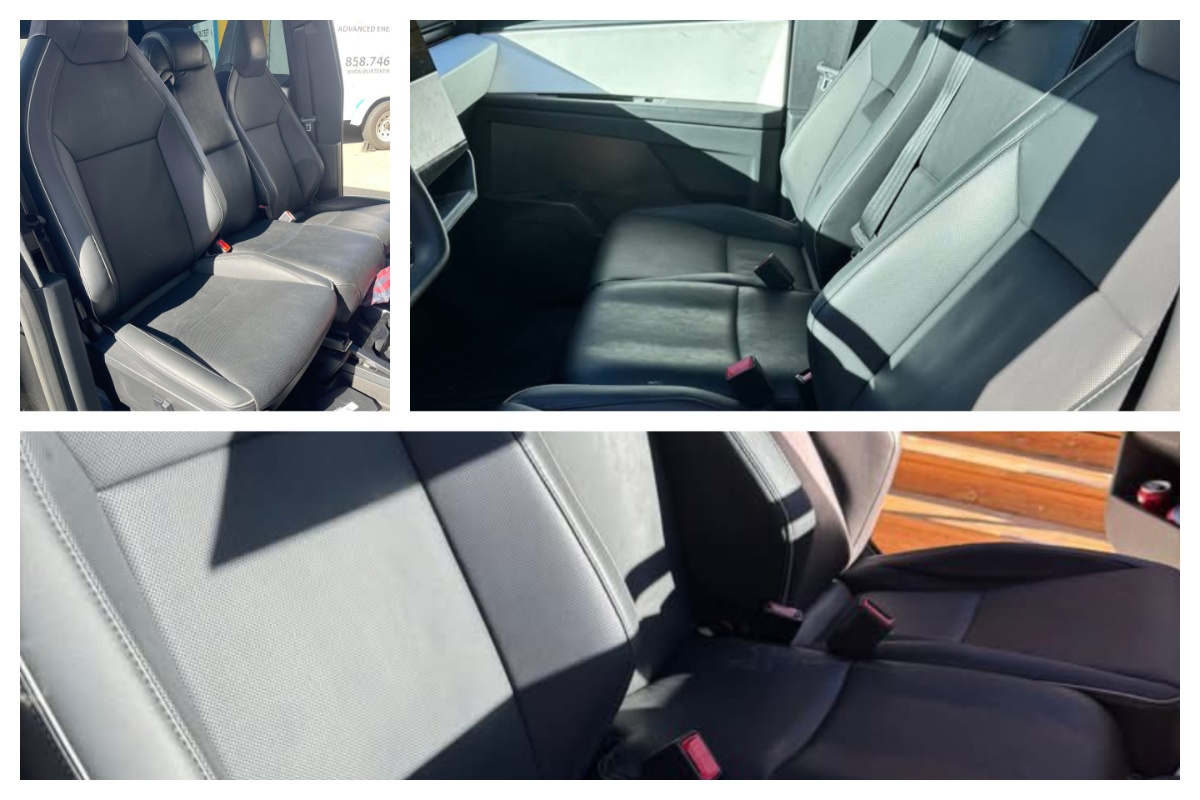
Tesla Cybertruck is significantly different from traditional pickups on the market in a lot of ways. However, one feature that was recently modified with its interior was a highly requested characteristic that is present in other trucks, but was void from Cybertruck.
Tesla went with a five-seat configuration with Cybertruck: two in the front and three in the back. The spacious interior is matched with plenty of storage, especially up front, as a pass-through, center console, and other storage options, but some Tesla fans wanted something different: bench seating.
Bench seating is popular in many full-size pickups and allows three passengers to sit up front. The middle seat is usually accompanied by a fold-down storage unit with cupholders.
Tesla decided to opt for no bench seating up front, despite the fact that it equipped bench seating in the unveiling in 2019. Interior photos from the unveiling event from nearly six-and-a-half years ago show Tesla had originally planned to have a six-seat configuration.
This was adjusted after the company refined the design:
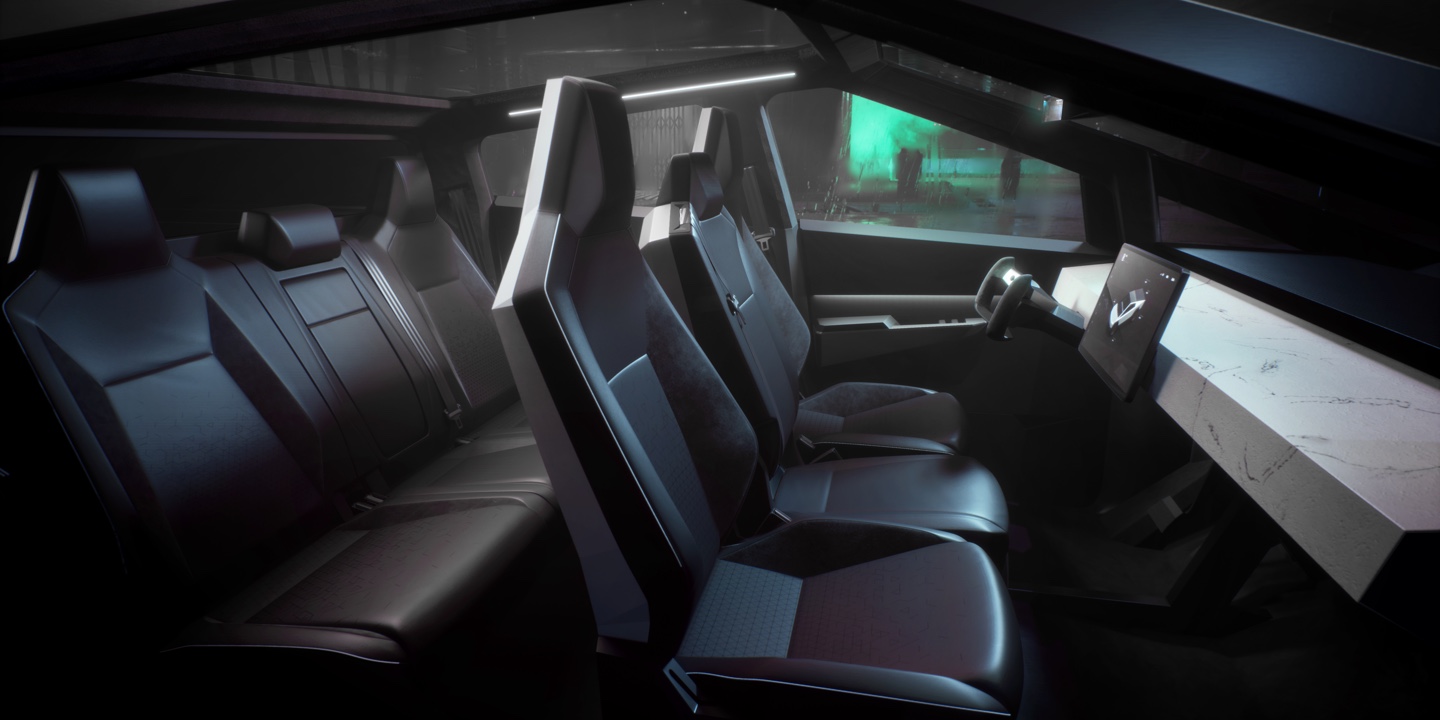
(Tesla Cybertruck interior configuration in 2019)
Despite Tesla abandoning this design, it does not mean owners were willing to accept it. One owner decided to modify their Tesla Cybertruck interior to equip that third seat between the driver’s and passenger’s thrones.
The fit is snug, and while it looks great, it is important to remember that this does not abide byregulations, as it would require an airbag to be technically legal. Please do not do this at home with your own Cybertruck:
- Credit: @blueskykites
- Credit: @blueskykites
- Credit: @blueskykites
The Cybertruck is a popular vehicle in terms of publicity, but its sales have been underwhelming since first delivered to customers back in 2023. It’s hard to believe it’s been out for two-and-a-half years, but despite this, Tesla has not been able to come through on its extensive order sheet.
This is mostly due to price, as Cybertruck was simply not as affordable as Tesla originally planned. Its three configurations were initially priced at $39,990, $49,990, and $69,990. At release, Cybertruck was priced above $100,000.
This priced out many of those who had placed orders, which is the main reason Cybertruck has not lived up to its expectations in terms of sales. The adjustments to the specific features, like the removal of the bench seat, likely did not impact sales as much as pricing did.
This modification shows some creativity by Tesla owners, but also shows that the Cybertruck could always be the subject of a potential refresh to include some of these features. Tesla routinely adjusts its vehicle designs every few years, so maybe the Cybertruck could get something like this if it chooses to refresh its all-electric pickup.
Elon Musk
Tesla CEO Elon Musk drops massive bomb about Cybercab
“And there is so much to this car that is not obvious on the surface,” Musk said.

Tesla CEO Elon Musk dropped a massive bomb about the Cybercab, which is the company’s fully autonomous ride-hailing vehicle that will enter production later this year.
The Cybercab was unveiled back in October 2024 at the company’s “We, Robot” event in Los Angeles, and is among the major catalysts for the company’s growth in the coming years. It is expected to push Tesla into a major growth phase, especially as the automaker is transitioning into more of an AI and Robotics company than anything else.
The Cybercab will enable completely autonomous ride-hailing for Tesla, and although its other vehicles will also be capable of this technology, the Cybercab is slightly different. It will have no steering wheel or pedals, and will allow two occupants to travel from Point A to Point B with zero responsibilities within the car.
Tesla shares epic 2025 recap video, confirms start of Cybercab production
Details on the Cybercab are pretty face value at this point: we know Tesla is enabling 1-2 passengers to ride in it at a time, and this strategy was based on statistics that show most ride-hailing trips have no more than two occupants. It will also have in-vehicle entertainment options accessible from the center touchscreen.
It will also have wireless charging capabilities, which were displayed at “We, Robot,” and there could be more features that will be highly beneficial to riders, offering a full-fledged autonomous experience.
Musk dropped a big hint that there is much more to the Cybercab than what we know, as a post on X said that “there is so much to this car that is not obvious on the surface.”
And there is so much to this car that is not obvious on the surface
— Elon Musk (@elonmusk) January 2, 2026
As the Cybercab is expected to enter production later this year, Tesla is surely going to include a handful of things they have not yet revealed to the public.
Musk seems to be indicating that some of the features will make it even more groundbreaking, and the idea is to enable a truly autonomous experience from start to finish for riders. Everything from climate control to emergency systems, and more, should be included with the car.
It seems more likely than not that Tesla will make the Cybercab its smartest vehicle so far, as if its current lineup is not already extremely intelligent, user-friendly, and intuitive.
Investor's Corner
Tesla Q4 delivery numbers are better than they initially look: analyst
The Deepwater Asset Management Managing Partner shared his thoughts in a post on his website.

Longtime Tesla analyst and Deepwater Asset Management Managing Partner Gene Munster has shared his insights on Tesla’s Q4 2025 deliveries. As per the analyst, Tesla’s numbers are actually better than they first appear.
Munster shared his thoughts in a post on his website.
Normalized December Deliveries
Munster noted that Tesla delivered 418k vehicles in the fourth quarter of 2025, slightly below Street expectations of 420k but above the whisper number of 415k. Tesla’s reported 16% year-over-year decline, compared to +7% in September, is largely distorted by the timing of the tax credit expiration, which pulled forward demand.
“Taking a step back, we believe September deliveries pulled forward approximately 55k units that would have otherwise occurred in December or March. For simplicity, we assume the entire pull-forward impacted the December quarter. Under this assumption, September growth would have been down ~5% absent the 55k pull-forward, a Deepwater estimate tied to the credit’s expiration.
“For December deliveries to have declined ~5% year over year would imply total deliveries of roughly 470k. Subtracting the 55k units pulled into September results in an implied December delivery figure of approximately 415k. The reported 418k suggests that, when normalizing for the tax credit timing, quarter-over-quarter growth has been consistently down ~5%. Importantly, this ~5% decline represents an improvement from the ~13% declines seen in both the March and June 2025 quarters.“
Tesla’s United States market share
Munster also estimated that Q4 as a whole might very well show a notable improvement in Tesla’s market share in the United States.
“Over the past couple of years, based on data from Cox Automotive, Tesla has been losing U.S. EV market share, declining to just under 50%. Based on data for October and November, Cox estimates that total U.S. EV sales were down approximately 35%, compared to Tesla’s just reported down 16% for the full quarter. For the first two months of the quarter, Cox reported Tesla market share of roughly a 65% share, up from under 50% in the September quarter.
“While this data excludes December, the quarter as a whole is likely to show a material improvement in Tesla’s U.S. EV market share.“
